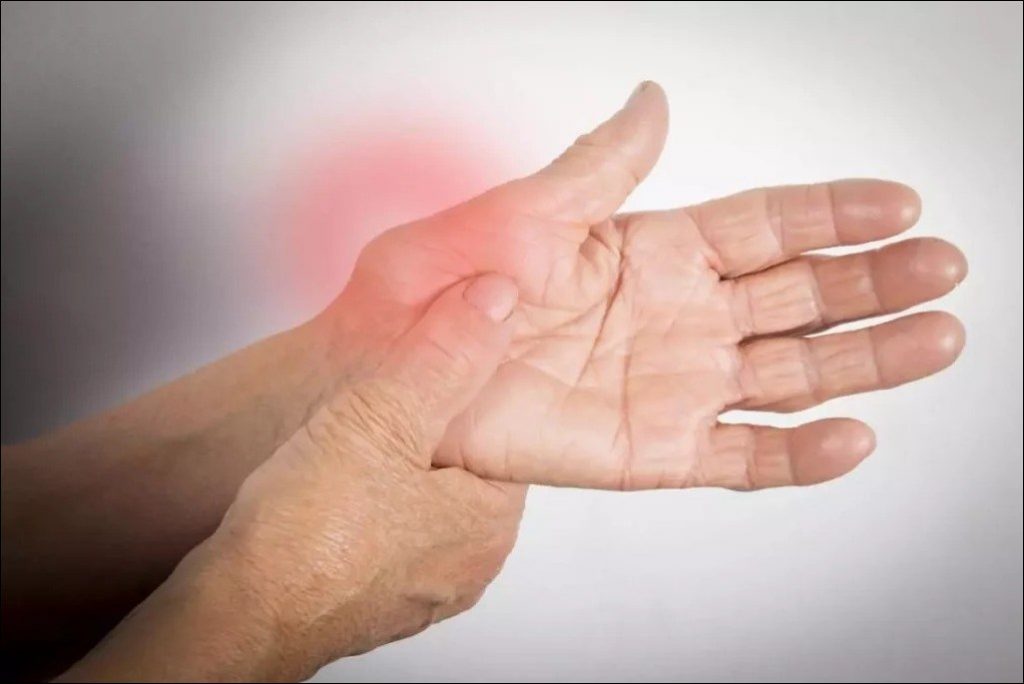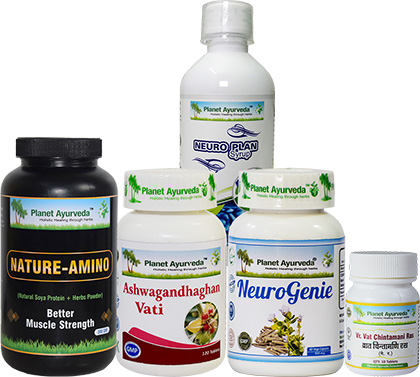Ayurvedic Treatment For Costochondritis With Herbal Remedies
Abstract
Costochondritis is a condition in which there is inflammation of cartilage that joins the sternum. The pain due to this inflammation may be like that of heart conditions. According to ayurveda costochondritis can be correlated to asthigata vikara. Here we are going to discuss all the things about costochondritis, its cause, symptoms and all the details about costochondritis. Ayurveda is best for treating costochondritis with the herbs that cures asthigata vikara. Here we will discuss the facts about asthigata vikara and how we treat asthigata vikara as per ayurveda.

Introduction
Costochondritis is a condition of inflammation of cartilage that connects the rib to the sternum. It is also known as chest pain, costosternal-chondrodynia or costosternal syndrome. Usually it has no well explained cause and it remain idiopathic. In most of the times pain is usually on left side of the ribs. It might last few weeks to several months. The pain occurs in the costochondral junction (the junction between cartilage and sternum). The patient must complain of chest pain and there is no chance that one should ignore any type of chest pain as sometimes it may be dangerous. In allopathic system doctors focuses on pain relief only. As per ayurveda the disease is correlated to asthigata vikara (diseases of bones) as it is the disease of cartilage known as upasthi and the disease is cure by the treatment given in asthigata vikara.
Symptoms of Costochondritis
The main symptom of costochondritis is chest pain along with that there are some other additional symptoms. Let’s take a look on those symptoms:
- Tenderness on pressing rib joints.
- In case of infection there is swelling, redness or pus.
- The pain might be worse when lying down.
- The pain gets aggravated when the patient applies pressure on the chest.
- Pain get worse while coughing
- Pain aggravates while doing physical activity
Kindly note if you are experiencing excessive chest pain we must prefer you to visit a doctor immediately as this pain might be concerned with some heart problem like MI or heart attack.
Causes of Costochondritis
Cause of costochondritis is not cleared yet but here are some risk factors that may lead to costochondritis:
- Injury like blow to the chest
- Physical strain like strenuous exercise, heavy lifting, severe coughing
- Joint infection like some kind of viral, bacterial or fungal infection
- Tumors: Cancerous or noncancerous tumors may cause costochondritis
- Most commonly occurs in women
Diagnosis of Costochondritis
The patient of costochondritis is diagnosed mainly physically. Doctor will diagnose physically while touching along the area that is inflamed and tender. He will move your arms and ribs in certain ways to diagnose the type of pain. As the pain occurs in costochondritis mimics other issues such as heart disease, gastrointestinal condition or lung disease. So the doctor will ask you for a certain test for distinguishing costochondritis from other health issues. The diagnostic techniques used are- X-ray, CT-scan, MRI and even electrocardiograph.
Ayurvedic view of Costochondritis
As per ayurveda costochondritis is correlated to asthigata vikara. These vikaras occur with dushti of asthivaha srotas as explained earlier that costochondritis is disease of upasthi (cartilage). The Causes of asthivaha srotas dushti as per ayurveda are- excessive physical activity, excessive anger, trauma, pressure, bone friction, excessive diet of vata dravya. As all the causes are responsible for vitiation of vata dosha so the treatment option is to balance the vata dosha such as panchkarma, tikta ksheer basti and tikta sarpi (ghee) paan (intake).
Home Remedies For Costochondritis
As the main feature of costochondritis is pain so we may have to ease this pain and home remedies might be effective in relieving pain. Here are some home remedies that are beneficial for this purpose.
- Costochondritis Stretches: These stretches are very helpful in managing sternum pain. Here are some exercises like wall side- in this exercise you have to stand with your back against the wall and raise your arms up with elbows raised up to the shoulder height and then you have to keep your arms against the wall then raise the arms overhead. Hold your arms and then come to the starting position. Repeat this for 10-12 times. Let’s discuss another exercise that is scapula squeeze- in this exercise you have to stand straight and breathe comfortably. Squeeze the both shoulders together and hold them as long as you can and then release. Repeat this exercise for 5-10 times.
- Use of heat or ice packs: pain and inflammation of costochondritis is relieved with this heat or ice packs. You have to use a heat or cold pack by putting hot or cold sauce in a towel to avoid skin damage.
- Rest: Avoid doing work to keep your rib cage in resting position to heal yourselves completely.
Ayurvedic Treatment of Costochondritis
Most commonly costochondritis goes on its own in several days or months or even a year. Treatment of costochondritis is just a focus on pain relief. As per ayurveda the treatment option for costochondritis is to deal with asthivaha stros dushti that is mainly caused by vitiation of vata dosha so we have to deal with balancing the vata dosha. Planet ayurveda has some great formulations which correct the disease from its root cause and permanently.
Herbal Remedies for Costochondritis By Planet Ayurveda
Planet Ayurveda is a clinic that prepares abundant formulations to heal different patients with different diseases. Herbal formulations of planet Ayurveda are made under the supervision of M.D. Ayurveda experts. All these formulations are 100% natural and free from any kind of additives, starch, color and fillers. Planet Ayurveda presents you with their costo-chon combo pack that is specifically formed for treating costochondritis. It consists of below listed 4 formulations.
- Boswellia Curcumin
- Osteo Plan Capsules
- Sinhnaad Guggul
- Hakam Churna


Product Description
1. Boswellia Curcumin
This herbal formulation consists of two herbs- shallaki (Boswellia serrata) and curcumin (Curcuma longa). Boswellia is anti-inflammatory, antipyretic and even prevents loss of cartilage. Curcumin is also known as a very effective anti-inflammatory herb. Hence the combo of both these drugs will show miraculous effect in receiving symptoms of costochondritis.
Dosage: 1 capsule twice daily after food with plain water.
2. Osteo Plan Capsules
This formulation consists of four ingredients- ashwagandha (Withania somnifera), shatavari (Asparagus racemosus), hadjod (Cissus quadrangularis) and Arjuna (Terminalia arjuna). All these herbs are having anti-inflammatory and analgesic actions along with that these herbs provide strength to the muscles, joints, and even bones. Also these herbs will prevent degenerative changes.
Dosage: 2 capsules twice daily after meal with plain water.
3. Sinhnaad Guggul
These capsules consist of six ingredients- haritki (Terminallia chebula), bibhitaki (Terminalia bellerica), amla (Emblica officinalis), shudh gandhak, shuddh guggul and erand oil. All these formulations have most of the properties that deal with costochondritis like anti-inflammatory, treat infections, and reduce stiffness.
Dosage: 2 tablets two times a day with lukewarm water.
4. Hakam Churna
This churna consists of 4 natural herbs- chandrashoor (Lepidium sativum), kalonji (Nigella sativaa), methi (Trigonella foenum graecum) and ajwain (Tracyspermum ammi). This formulation pacifies all the three doshas along with anti-inflammatory properties and also reduces pain. Hence it is given in costochondritis.
Dosage: 5 mg twice daily with hot water.
Diet for Costochondritis
Food to be Consumed
- Oats
- Whole wheat
- Cherries
- Dates
- Grapes
- Sweet potatoes
- Avocado
- Cooked peas
- Moong daal
- Red lentil
- Cow milk
- Butter
- Cream
- Garlic
- Cumin
- Turmeric
- Fruit juices
- Herbal tea
- Sea food
- Egg white
- Almonds
- Walnuts
- Cashew nuts
- Jiggery
- Honey
Food to be Avoided
- White rice
- Dry oats
- Melon
- Dried fruits
- Sprouts
- Cauliflower
- Spinach
- Mushroom
- Ice cream
- Powdered milk
- Coriander seeds
- Beer
- Wine
- Coffee
- Red meat
- Mutton
- Flaxseed oil
- Canola oil
- White sugar
- Brown sugar
Contact Planet Ayurveda Support Team to provide you the costing/ordering and delivery information at – costing.planetayurveda@gmail.com or Call at 0172-521-4040 (India), +91-172-521-4040 (Outside India) or Whatsapp at (+91) 842-749-4030.
Conclusion
From this study we gain knowledge about what is costochondritis and the main distinguishing feature of costochondritis is pain and the pain may mimic the other dangerous diseases like heart disease, lung disease and many other diseases that may cause chest pain. And while studying this article we came to know that there is not any specific reason for costochondritis, it may be caused by some trauma, infections or any pressure applied over the chest region. Along with that we consider it as asthigata vikara as per ayurveda. And hence treatment options for costochondritis may follow the treatment option for asthivaha srotas vikara. Planet ayurveda is here with a costo-chon combo pack that treats costochondritis with specific concern.



